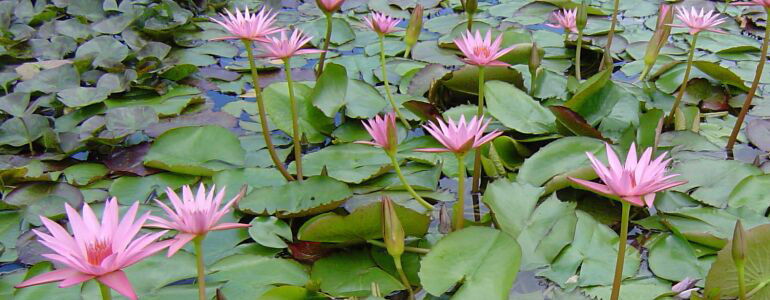
Today we will have a look at one method for getting tropical water lilies to produce tubers. Remember that tubers help a great deal when overwintering tropical water lily plants.
Stress stress stress
You can trigger this response in your own pond or water garden. First we’ll need to know several things. This is a process that takes some time and doing this will cause you to lose a good portion of your growing season (no blooms).
Lets begin
Weeks 1-2: Unpot tropical water lily from large pot and move to a small pot–do not fertilize. We highly recommend a pot with holes at the bottom but more important choose a pot that is smaller than a gallon. We have had amazing results with quart pots.
Week 3: Move the tropical water lily which should be in a small pot closer to the surface of the water. If you had it at say 18 inches of depth, move to 9 inches. Note
Week 4: Move the tropical water lily even closer to the surface of the water. If before it was at 9 inches, now move it to 5 inches.
Midpoint checkup
Week 5: Once again move the tropical water lily towards the surface of the water. It was 5 inches, now move it to 1 inch.
Weeks 6-7: Keep the plant at this level. The plant should have stopped blooming and cold weather should be approaching
Week 8 or more: You will want to leave your tropical water lily plant until just before the first frost will occur
Harvest for overwintering
It’s now time to unpot the plant and gather the tubers. We recommend tossing them in a tropical aquarium as that is the best method for overwintering. They will sprout underwater foliage and when spring comes around you can set them in your water garden or pond at the appropriate time. As for the actual plant you have several options:
- Send it to a warmer climate. There are some places that tropical water lilies grow and bloom year round (that sounds like our location in Florida)
. - Toss the plant–although not recommended
. Grow the plant inside during the winter.
Let us review
Your tropical water lily is stressed through a small pot, lack of nutrients, simulated drought, and finally cooler water temperatures. It must occur over a period of time as tubers do not form overnight. Good luck!
